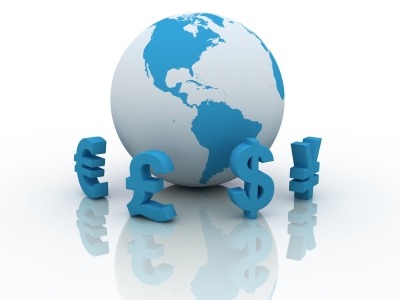The exchange value of a currency, or the rate of exchange, fluctuates with changes in demand and supply. The factors which affect the demand for and the supply of a currency are many and varied. There are some factors which operate in the short period and have influence on day-to-day- fluctuations in rates of exchange. The commercial and financial relationship between trading countries is now extensive and payments on various accounts fall, due for early settlement. These payments constitute the short-term demand and supply in regard to currencies. There are, however, changes in currency and credit conditions and political and industrial conditions which have their influence on exchange rates only in the long period.… Read the rest
Forex Trading
Use of Forex Futures
Forex futures are futures markets where the underlying commodity is a foreign currency. Foreign currency futures are essentially the same as all other futures markets (index and commodity futures markets), and are traded in exactly the same way. Forex futures markets trade futures contracts that reflect the exchange rates of two currencies. For example, the most popular currency futures market is the EUR futures market, which is based upon the Euro to US Dollar exchange rate.
Hedging with Forex FuturesTenders make use of the market for forex futures/foreign currency futures in order to hedge their foreign exchange risk. For instance suppose a US importer importing goods from India for 1 million Rupees and he needs this amount for making payment to the exporter.… Read the rest
Foreign Exchange Department of Banks
The Foreign Exchange department, which is also being called as the International Banking Division, is one of the important departments of the banks operating in international market. In India also all scheduled commercial banks, both in the nationalized or non-nationalized sectors, do have Foreign Exchange departments, both at their principal offices as well as offices, in metropolitan centers. This department functions independently under the overall change of some senior executive or a senior officer well-versed in foreign exchange operations as well as in the rules and regulations in force from time to time pertaining to foreign exchange transactions advised by various government agencies.… Read the rest
Economic Exposure of Foreign Exchange Risk
Economic exposure is concerned with the present value of future operating cash flows to be generated by a company’s activities and how this present value, expressed in parent currency, changes following the foreign exchange rate movements. The concept of economic exposure of foreign exchange risk is most frequently applied to a company’s expected operating cash flows from foreign operations, but it can equally well be applied to a firm’s home territory operations and the extent to which the present value of those operations alters resultant upon changed exchange rates. For the purpose of convenience, the exposition that follows is based on a firm’s foreign operations.… Read the rest
Exchange Rate Factors – Factors Affecting Exchange Rates
When trade takes place between the residents of two countries, the two countries being a sovereign state have their own set of regulations and currency. The exporter would like to get the payment in the currency of his own country, the importer can pay only in the currency of the importers country. This creates a need for the conversion of the currency of importer’s into that of the exporter’s country. Foreign exchange is the mechanism by which the currency of one country is gets converted into the currency of another country. The conversion is done by banks and financial institutions, who deals with foreign exchange business.… Read the rest
Influence of Interest Rate on Exchange Rates
Traditional macroeconomic exchange-rate models are based on fundamental analyses. In these models, the basic force that drives currency’s rate comes from the balance between supply and demand of currency, for example if the demand for the U.S. dollar exceeds its supply at the current exchange-rate against the euro the price of US dollar in terms of the euro will rise. Conversely, if supply exceeds demand, the price will fall. Demand and supply factors that govern currency’s rate’s become much more complex than that because people don’t use currencies just to purchase foreign goods and services, but also for activities like cross-border investment and speculation.… Read the rest

